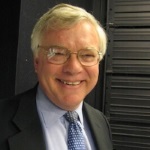
Developing a Realistic International Strategy
A Conversation With Dr. Chet Haskell
How do international programs enrich a university?
You’re preparing students to go out into the world, and the world is global and interconnected. Part of any decent education is to have some sense of what it means to be international. You need to build awareness of what is going on in the rest of the world. In the United States, fewer than 40% of adults have a passport. While that number is up, we still have lots of people who don’t think internationally.
Is there a template for success?
Universities go at this in lots of different ways. The most obvious version is study abroad programs. The problem is most students don’t take part in study abroad. There are also programs that bring students from other parts of the world providing an international perspective for US students. Faculty members are recruited internationally. And then there are all sorts of joint activities and research efforts. The key is that each institution needs to come up with its own strategy to provide the best opportunities for its students.
Some universities and colleges have been doing this for ages. There are many small liberal arts colleges that have been very aggressive in having students study abroad. That was a policy decision they made years ago. Others have experimented with different things. Some have become very international in their student body. Look at the University of Southern California, which has one of the highest international student populations. They’ve made a decision that is partially strategic and partly financial to make their student body reflect the world. However, each institution does it differently. There’s no standardized approach
How do they decide what to do?
I have a good friend who is a former president of one of the leading universities in Spain. He once opened a file drawer full of Memoranda of Understanding from around the world, each outlining an academic relationship. He calls these “We Promise to Love Each Other” agreements, and they mean anything. That’s what a lot of these things are.
To succeed, there is a need to build real relationships. It starts with developing strategies that are appropriate for the institutions. From there, relationships can be built. Each relationship is unique and has to be customized for both partners. It takes a broad understanding of the possibilities to get something that works, and you need to defend against outside factors that can easily damage it.
What can Edu Alliance do?
The principals of EDU Alliance bring together strong, but different experiences and expertise. One of us is located in the UAE and is extremely knowledgeable about the region and higher education there. Another understands American higher education administration and distance education. The third person is a former president with an extensive background in international programs and arrangements. Further, EDU Alliance has access to a diverse group of distinguished higher education professionals who can bring their particular skills to bear on a given problem.
Being able to access people with such experience and perspectives, along with the networks they represent, mean EDU Alliance can address each situation or problem in a tailored fashion with a focus on effective outcomes.
